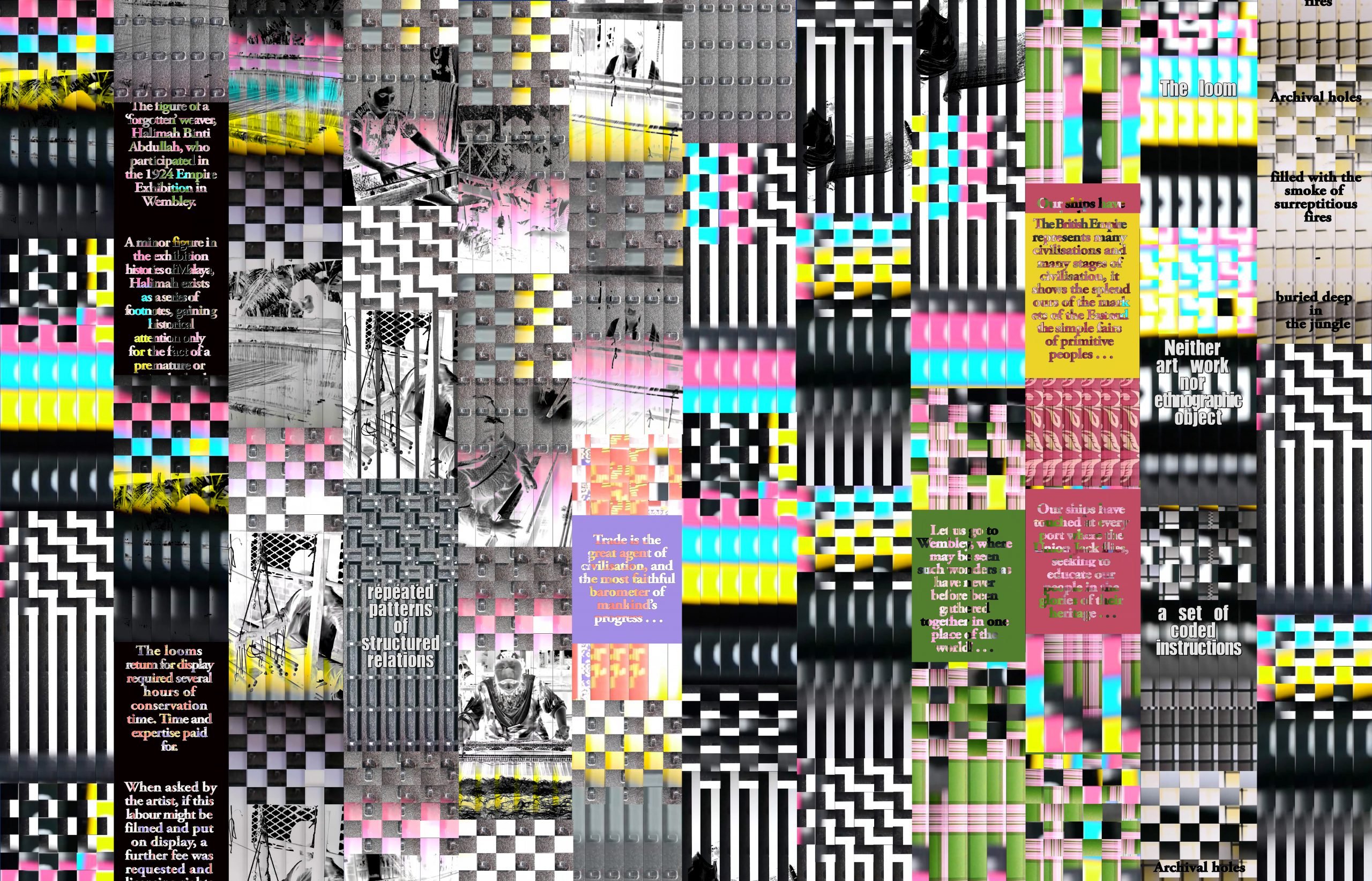The Weaver's Lament
2017 - Film & Video (Film & Video)
12:24 minutes (looped)
Erika Tan
Part of an installation commissioned by National Gallery Singapore, The Weaver’s Lament by Erika Tan addresses the invisibility of women textile artists and their labor. Tan’s video focuses on the story of a forgotten weaver, Halimah Binti Abdullah, who participated in the 1924 British Empire Exhibition in the United Kingdom. A minor figure in the exhibition histories of what was formerly known as Malaya, Abdullah’s loom was left behind at the end of the exhibition, now residing in the Victoria and Albert Museum. In 2016, the loom was loaned to Tan for an exhibition in Singapore, for which the artist asked the Victoria and Albert Museum if she could film the preparation of the loom for its ‘return’ to the museum. Tan was told that she would have to pay to do so, and the fee for this would be as much as the commission itself. The Weaver’s Lament is a digital weaving that entwines Tan’s interaction with the museum into its fabric, highlighting how labor (in this case the Victoria and Albert Museum’s conservator) can be understood as both action and representation, for which payment is made twice—unlike Abdullah, who both performed the Malay woman and demonstrated her craft. Tan utilises the act of digital printing and references both the absence of the ‘real’ work and the act of reproduction as the sole method of reclaiming.
Erika Tan’s practice is primarily research-driven with a focus on the moving image, referencing distributed media in the form of cinema, gallery-based works, Internet and digital practices. Her work starts from reviewing museum collections and objects, mainly using moving images with digital, Internet, and cinematic forms. Tan explores detailed facts and archival evidence with an anthropological approach to archival research, correlating history as expressed through artistic representations, embedding figures from the past into contemporary art context. Tan’s practice proposes the idea of digital repatriation of museum objects between Southeast Asia and Britain, the meaning of artist as a representative, and female roles from the British colonial period in contemporary contexts. By dislocating the subject and object from historical records, Tan’s work fills the gap in histories and bridges separate worlds.

